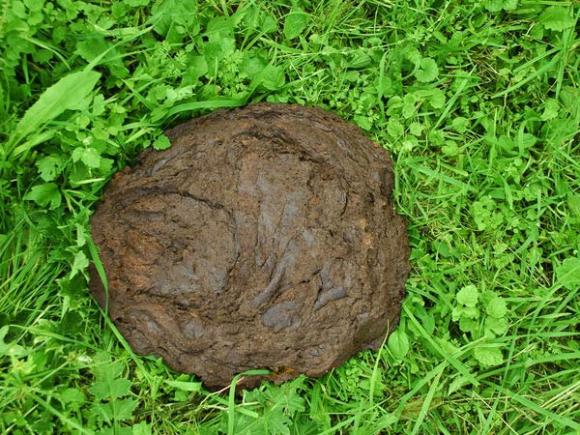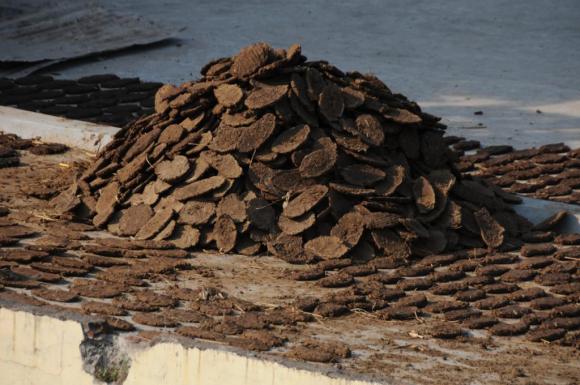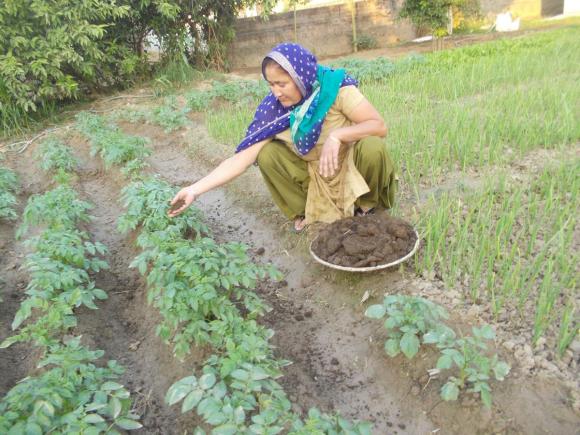-
About
- Our Work
- Get Involved
- Stay Updated
The LifeCycle of Cow Dung in India
India is a land of 1.31 billion people, with diverse ethnic and socio-economic linkages. With the majority living in rural areas, The Father of Nation, Mahatma Gandhi once said, “The Future of India Lies in Its Villages”.
Rural India had been a show-stopper for many revolutions that occurred in India and it is the part to be focused upon for many more to come. The life in villages depends upon agriculture and its allied sectors. Rearing of dairy animals for milk production has been practiced since ages by the rural people and due to such efforts and hard work, today India stands at Number 1 in milk production. Not only milk, the dairy animals also excrete a valuable commodity i.e. dung, which has multiple uses and without which many homes cannot cook their meals.
The lifecycle of cow dung begins from the fields where fodder is grown and mostly ends at the same place. After feeding the feed and fodder, dairy animals void dung after metabolism of the same. Now, the dung in Indian villages is collected twice a day, once in the morning before milking and other in the evening that too before milking.

The cow dung then is accumulated at a particular place in the form of heaps for a particular period of time (which usually is 1-2 years) to convert it into compost manure. Further the manure so formed after composting is used in agricultural fields and also in vegetable gardens. The compost manure is commonly used as the sole fertilizer for the cultivation of fodder crops in India like Berseem (Trifolium alexandrium), Lucerne (Medicago sativa), etc in rural parts of the country thus decreasing the cost of production. Cow dung consists of 3% nitrogen, 2% phosphorous and 1% potassium (NPK 3-2-1) which is sufficient for crop growth and grain production.
Some progressive farmers undertake the process of vermicomposting by the use of earthworms and further, they use the same in their agricultural land and vegetable gardens. Some farmers have successfully used this vermicompost for organic mushroom cultivation thus making it a perfect compound to be used in organic farming.
Cow dung has been also used for the production of bio gas or gobar gas in India. Cow dung gas is 55-65% methane, 30-35% carbon dioxide, with some hydrogen, nitrogen and other traces. Its heat value is about 600 B.T.U. (British Thermal Unit) per cubic foot. Cow dung has been found safe for environment as it do not causes pollution as caused by the burning of petroleum products and forest timber. The ever increasing demand of fuel in India and its shortage has made the farmers of Gujarat, Uttar Pradesh, West Bengal, Maharashtra, Madhya Pradesh, Bihar, etc states to construct and run such plants for gas production.
The Ayurvedic system of medicine of India is famous throughout the world and it documents the medicinal use of cow dung by mixing it with four other preparations and products obtained from cow known as Panchgavya. Panchgavya consists of cow dung, cow urine, cow milk, ghee obtained from cow milk and curd obtained from cow milk only. The mixture has proven to be effective in treating Psoriasis, Neurological disorders, Diabetes Mellitus, Pulmonary Tuberculosis, Arthritis, etc in humans. In animals, it has been found that it acts as an antibiotic growth promoter in broiler diet, capable of increasing the growth of planktons for fish feed, increasing the production of milk in cows, increasing weight of pigs and increase egg laying capacity of poultry chicken.
Further rural people use dung as a source of fuel by sun drying of dung, thus forming cow dung cakes. In most parts of the country people use cow dung cakes as the only source of fuel to cook their daily meals. Although it is very economical for such people but in the long run, the usage of dung cakes is very deleterious both environmentally and medically. Population pressure has practically eliminated India's forests, causing desperate fuel shortages in most rural areas. As a result, up to three-quarters of the country's annual billion tons of manure is burned for cooking or heating. This creates enormous medical problems - the drying dung is a dangerous breeding place for flies and the acrid smoke is responsible for widespread eye and pulmonary diseases and deprives the country's soil of vital organic nutrients contained in the manure.

From the above points, it can be concluded that dung from dairy animals serves as a vital resource, if used effectively. Many modifications are subjected to dung for its productive use thereby completing its lifecycle.
Tags:About the author
Related Posts
Comments
No comments made yet. Be the first to submit a commentBy accepting you will be accessing a service provided by a third-party external to https://www.ypard.net/
Get in touch
Email: [email protected]
YPARD Global Coordination UnitHosted by AGRIDEA and the Czech University of Life Sciences Prague
Lausanne, Switzerland and Prague, Czech Republic - Our Work


